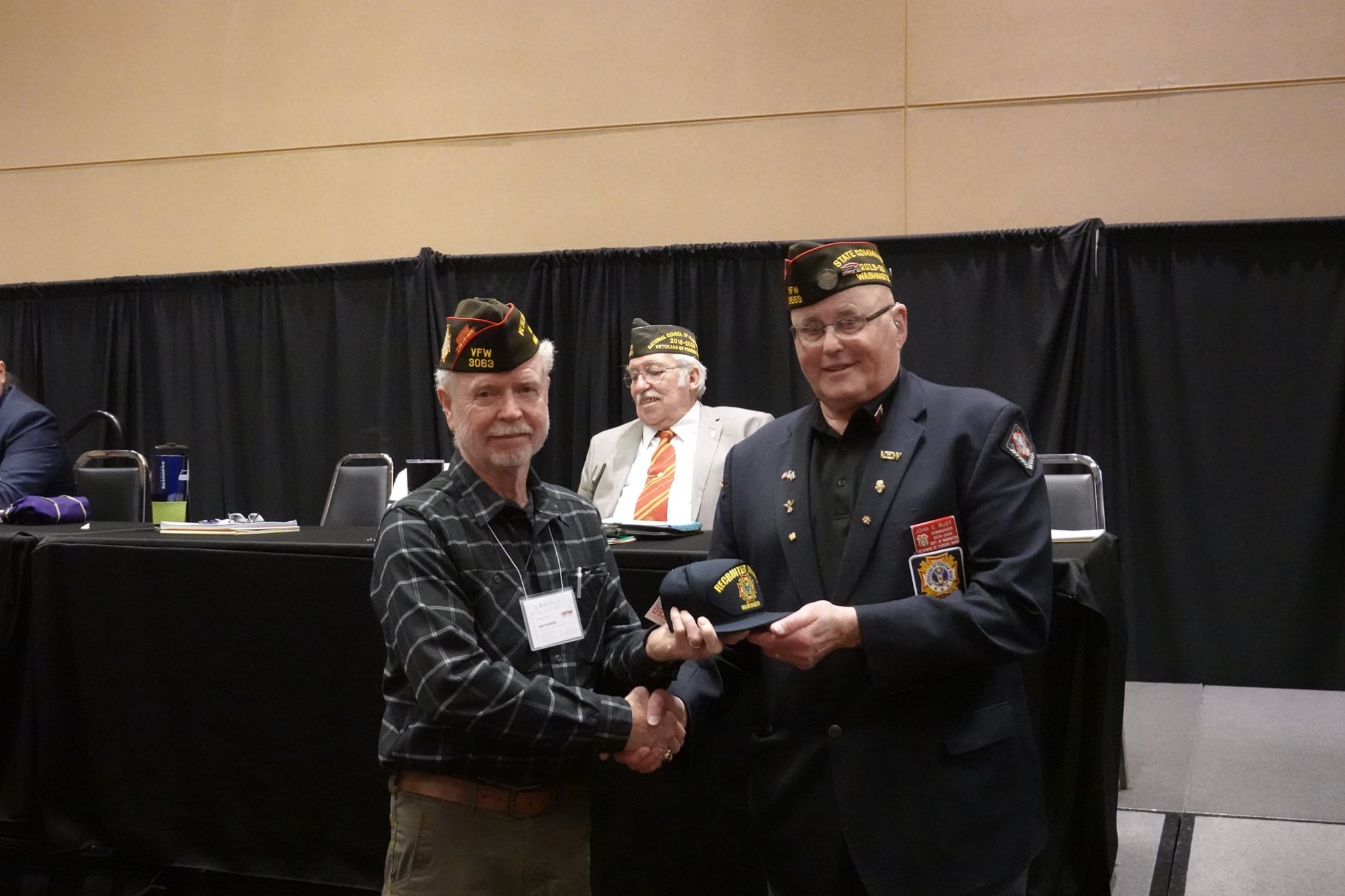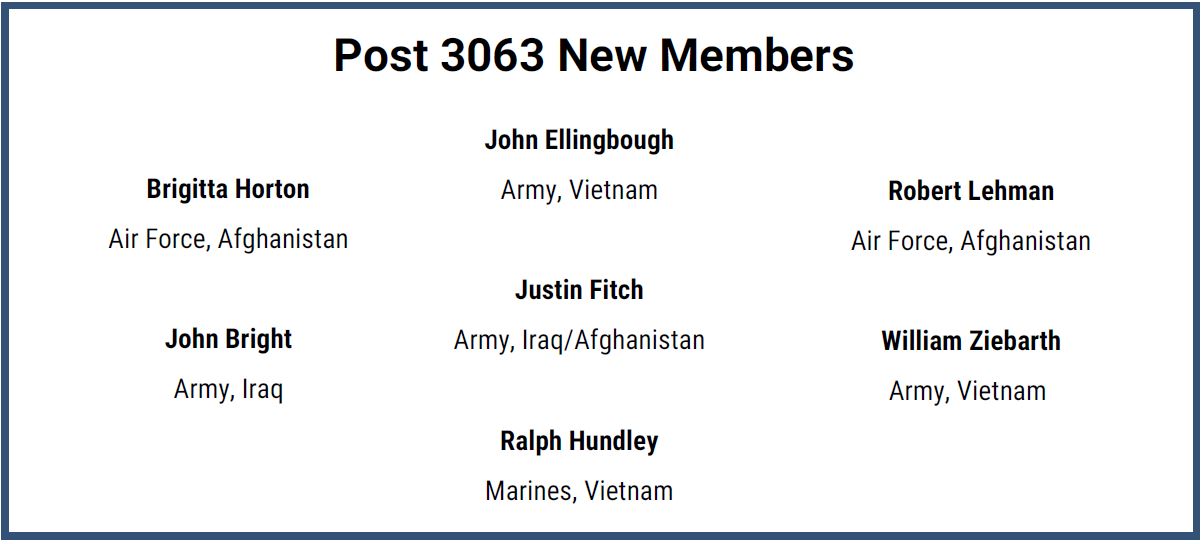Ballard Eagleson VFW Post 3063’s February newsletter is available here. Highlights include: Highlights From the Mid-Winter Convention; Comrade Tamayao Administers Oath of Office to New City Councilmember (Facebook Link); Veterans Must Remain Vigilant Online; DoD Answers Top 10 Questions on Expanded Commissary, Exchange, MWR Access; and Blue Water Navy: Briefing for Veterans, Survivors and Their Family members.
Author: ateeter
Highlights From the Mid-Winter Convention
By Alyson Teeter
Members of Post 3063 traveled in the snow to attend the annual VFW Department of Washington Mid-Winter convention in Yakima Jan. 17-18, 2020.

Commander Joe Tiffany, Sr. Vice Commander Joe Fitzgerald, Quartermaster Harold Rodenberger and Adjutant Aly Teeter were in attendance and sat in on business meetings, breakout sessions, and a banquet that recognized the department-level essay winners and teacher and first responder award recipients.
Post 3063’s Teacher of the Year, Dan Waldschmidt from Hamilton Middle School, won at the Department-level and his award was presented to the District 2 Commander, Carl Christophersen. According to the VFW, the VFW Teacher of the Year award contest recognizes exceptional teachers for their outstanding commitment to teaching Americanism and patriotism to their students.
Quartermaster Harold Rodenberger accepted a recruiting award for the numerous new members he’s brought into the post this year. Well done, Comrade Rodenberger!

The Voice of Democracy winner, Gabrielle DeMarco from Enumclaw High School (sponsored by VFW Post 1949) read her essay to the audience. She’ll go on to compete at the national level and will attend the National Convention this summer.
Adjutant Teeter attended the membership break-out session and captured these highlights from the presentation and discussion:
– Heroes in the Ballpark is coming up April 24 in Tacoma. They need donations.
– Community Service Reports: Necessary for non-profit status.
— Ideas for reporting: collect verbal reports at business meetings; display wall calendar in post and people can pencil in what they did.
– Post 3063 is now the largest post in District 2.
– We can also donate to local school/community projects; will help spread the word about our presence and involvement in the community. One post donated money to building a community playground.
– Invite local schools to have fundraisers at the post.
– Make the VFW fact sheet a placemat for fundraisers.
RETENTION:
– Present opportunities to new members. Have 2 members dedicated to sitting down with newbies and explain how things work at the post. Ask, “What committee would you like to be on?” Don’t force them to do volunteer though or else they’ll leave.
– Give post t-shirts instead of caps to new members.
– Highlight VA benefit changes through newsletters, SM posts, etc.
RECRUITING:
– Boat shows, markets, fairs, etc. Always have a service officer present. Bring prospect forms so you can contact them again to join.
— NOTE: We’ll have a booth at the Seafood Fest again. Contact Joe Tiffany to sign up!
– Challenge post members to recruit at least 1 new member a year. Give those who did a special button (“I got one.”) and invite them to a celebration dinner.
1st Quarter 2020 Newsletter Available
Ballard Eagleson VFW Post 3063’s 1st Quarter 2020 newsletter is available here. Highlights include: Quartermaster’s Update, Wreaths Across America: Remember – Honor – Teach, Post Reps Present Certificates to Essay Writers and Teacher of the Year, New Member Spotlight: Justin Fitch, and Post 3063 New Members (4th Quarter)
New Member Spotlight: Justin Fitch
This is a recurring column that highlights new VFW Post 3063 members. Comrade Justin Fitch joined the post in November 2019.
What motivated you to join the VFW? I was referred to the VFW by an existing member who told me about the charitable work the organization does, that appealed to me so I wanted to become a member.
What is your military background? During my time in the military I served as an infantryman in the 75th Ranger Regiment. I deployed to Iraq and Afghanistan.
Hometown, civilian job, education, family, hobbies, or anything else you’d like to tell us about yourself? I was born and raised here in Seattle. I enjoy hiking, climbing, and spending time with my dog.
What do you hope to achieve being a member of the VFW? I would like to get more involved in some of the volunteer work that the organization does.
Post 3063 New Members (4th Quarter)

